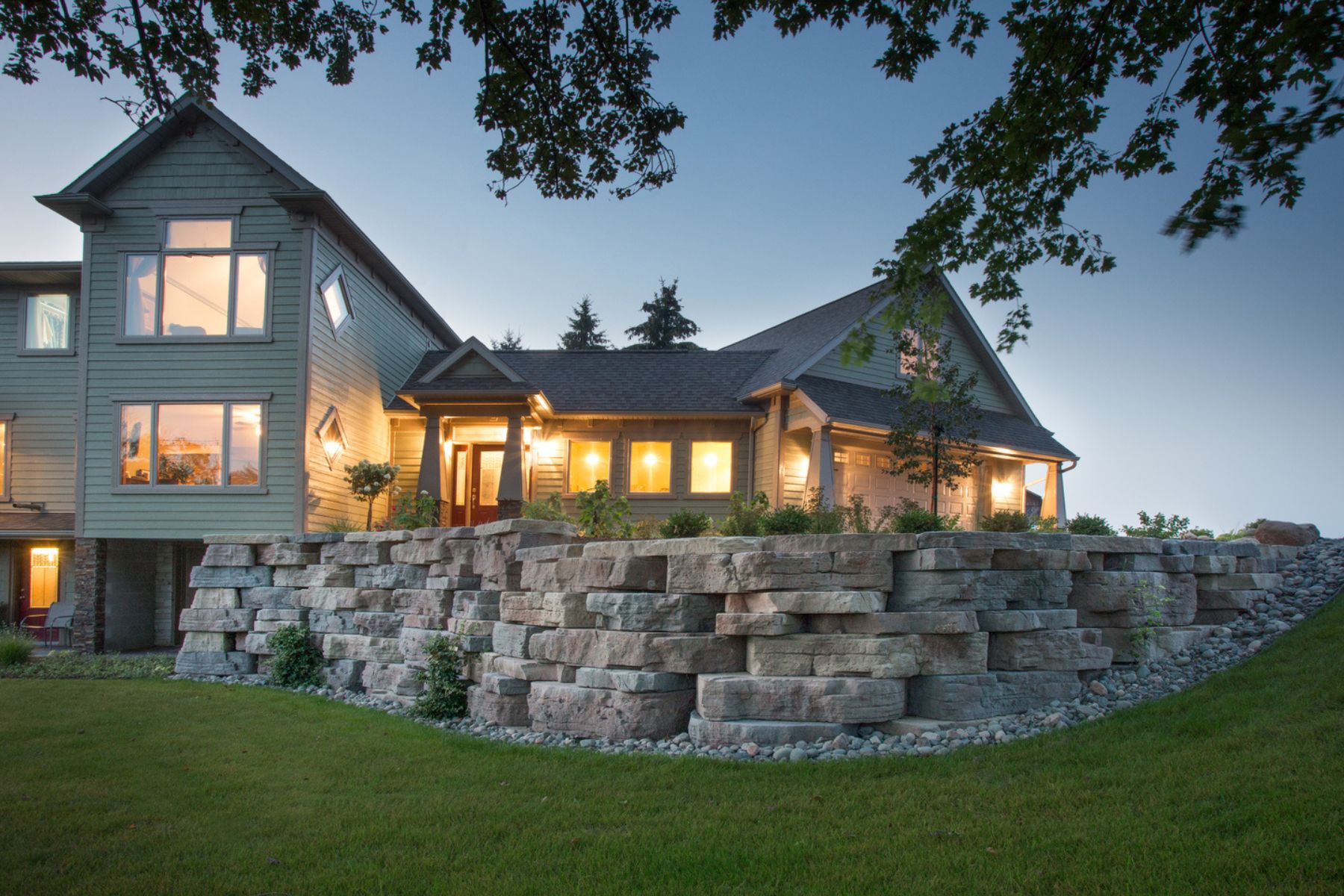Natural Stone Beauty
These walls fit well with various landscape styles, from rustic to modern. The irregular shapes and sizes of the stones add character, making each wall unique. Whether as a garden backdrop, a patio boundary, or a structural element on a slope, outcropping retaining walls provide lasting beauty that improves over time.

Strength and Durability
The heavy, interlocking stones create a stable structure that needs little maintenance. Natural stone doesn’t degrade over time, ensuring your wall stays strong and functional for many years. This durability means fewer repairs or replacements, making it a smart long-term investment.

Versatile Design Options
For managing water flow and preventing erosion, outcropping retaining walls are effective. The gaps between the stones allow proper drainage, reducing water buildup and soil erosion. You can also design these walls with built-in seating, planters, or steps, enhancing their functionality and appearance.

4 Factors to Consider When Choosing Outcropping Retaining Wall
1. Site Conditions and Soil Type
The first factor to consider is the condition of your site and the type of soil. The stability of your retaining wall largely depends on the soil’s composition and drainage characteristics.
- Soil Stability: Different soils have varying levels of stability. Clay soils, for instance, can expand and contract with moisture changes, while sandy soils drain well but may not provide as much stability.
- Drainage: Proper drainage is essential to prevent water from building up behind the wall, which can cause pressure and potential failure. Assess your site for natural drainage patterns and consider incorporating drainage solutions like gravel backfill and weep holes.
- Slope and Terrain: Evaluate the slope and terrain where the wall will be installed. Steeper slopes may require additional engineering and support to ensure stability.
2. Stone Selection and Aesthetics
The type and appearance of the stones you choose will significantly impact the overall look and feel of your retaining wall.
- Stone Size and Shape: Outcropping retaining walls typically use large, natural stones. The size and shape of these stones can vary, so select those that best suit your design vision. Larger stones offer a more rugged and dramatic look, while smaller stones can provide a more refined appearance.
- Color and Texture: Natural stones come in a variety of colors and textures. Choose stones that complement your existing landscape and home exterior. Consider how the stones will weather over time and how they will integrate with your garden’s aesthetic.
- Consistency: While variety in stone appearance can add visual interest, maintaining some consistency in size, shape, and color will create a more cohesive and harmonious look.
3. Structural Integrity and Longevity
The structural integrity and longevity of your retaining wall are paramount, especially if the wall will support significant weight or hold back large amounts of soil.
- Stone Quality: Ensure the stones are of high quality, durable, and suitable for outdoor use. Poor-quality stones can crack or erode over time, compromising the wall’s stability.
- Construction Technique: The method used to construct the wall will affect its strength. Proper interlocking of stones and secure placement are critical. Consider hiring a professional with experience in building outcropping retaining walls to ensure a solid and lasting structure.
- Reinforcement: In some cases, additional reinforcement may be needed, such as geotextile fabric, tie-backs, or anchors, to provide extra stability.
4. Maintenance and Cost
Consider the long-term maintenance and overall cost of your retaining wall project.
- Initial Investment: The cost of building an outcropping retaining wall can vary based on the size of the wall, the quality of the stones, and the complexity of the installation. Get multiple quotes and ensure you understand what is included in the price.
- Maintenance Requirements: While outcropping retaining walls are generally low-maintenance, they do require some upkeep to ensure longevity. Regularly check for signs of movement or erosion and clear any vegetation that could undermine the wall’s stability.
- Lifespan: Natural stone walls can last for decades with proper care, making them a cost-effective solution in the long run. Consider the lifespan of the materials and the potential need for repairs when evaluating overall cost.

